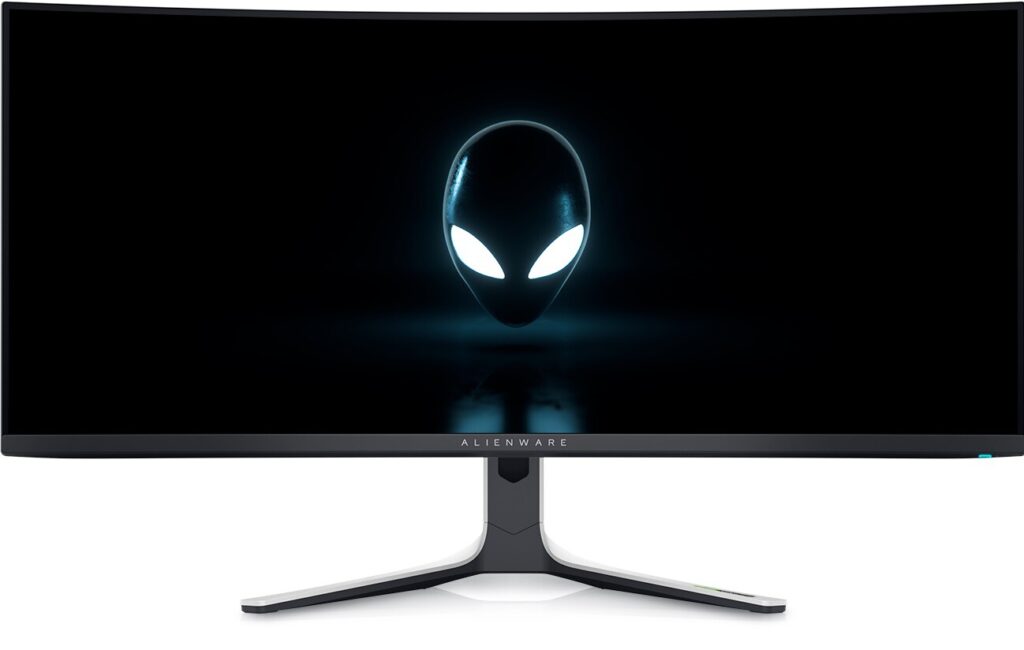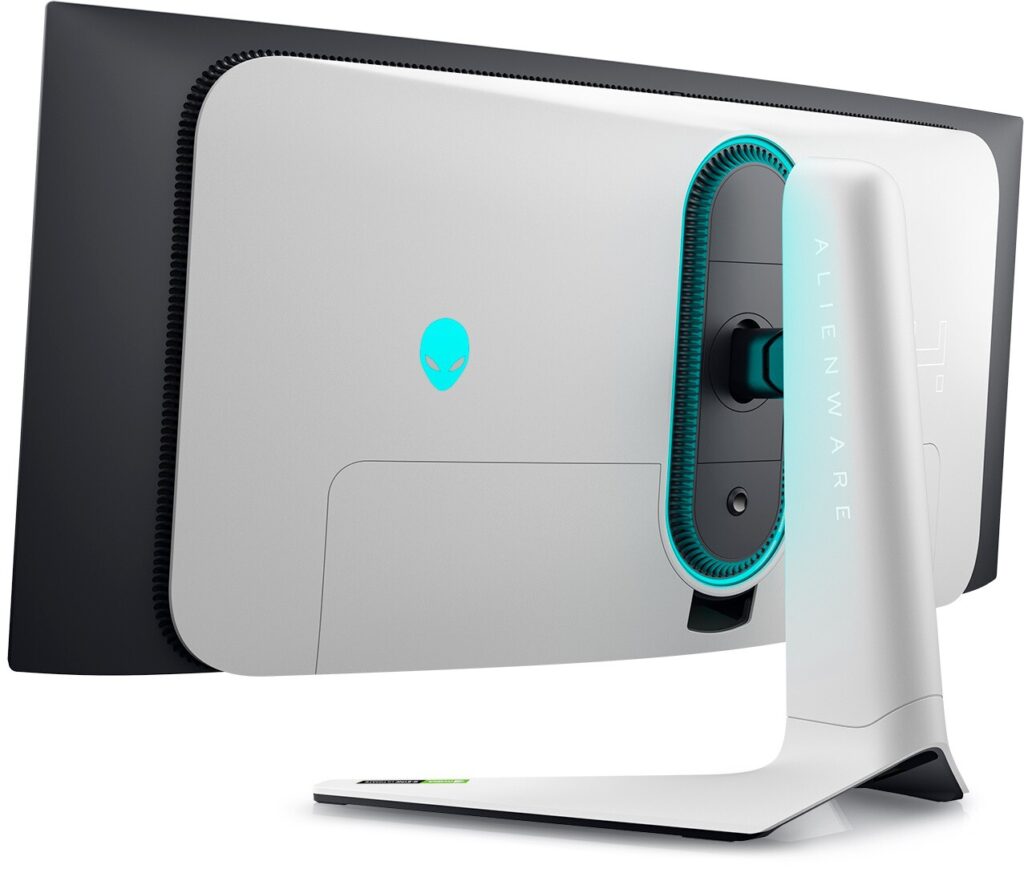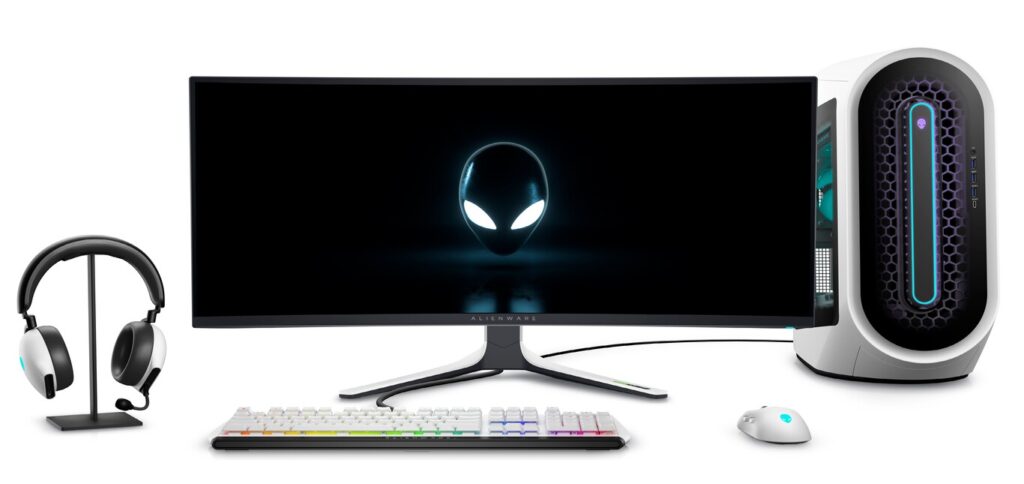We have been tracking QD-OLED panels for almost three years, which, according to leaks, were already in Samsung’s oven in 2019. And finally, several weeks ago, Sony announced that it has incorporated these new arrays manufactured by this South Korean brand in its flagship TV for 2022. Samsung and Alienware did not take long to react and also presented two very interesting gaming monitors that employ this same panel technology. And the latter is almost here.
We have already known all the features of this new Alienware proposal, and on paper, it looks great. Its best asset is, of course, its OLED panel backed by quantum dot technology (we explain in depth what QD-OLED technology offers in this article), but it is not the only thing that makes it attractive. It also has a stunning design and a breathtaking response time. Here are all the details about a monitor that we find irresistible on paper.
Alienware 34 QD-OLED technical specifications
| Alienware 34 QD-OLED | |
|---|---|
| Panel | 34.18-inch anti-glare QD-OLED, up to 175Hz, 21:9 aspect ratio, 1800R curvature |
| Resolution | 3440 x 1400 dots |
| Brightness (Typical) | 250 nits |
| Brightness (Maximum) | 1000 nits |
| Color Coverage | 99.3% of the DCI-P3 color space |
| Color Accuracy | DeltaE<2 |
| Contrast | 1,000,000:1 |
| HDR | VESA DisplayHDR 400 True Black |
| Viewing Angles | 178º/ 178º |
| Response Time | 0.1ms (GtG) |
| Adaptive Sync | NVIDIA G-SYNC Ultimate |
| Connectivity | 2 x HDMI 2.0, 1 x DisplayPort 1.4, 2 x USB 3.2 Gen 1 (front), 2 x USB 3.2 Gen 1 (rear), 1 x audio out, and 1 x 3.5mm jack |
| Consumption | 42.3 watts |
| Dimensions | 415.5/525.5 x 815.2 x 305.7 mm (with base) |
| Weight | 6.9 kg (with stand) |
The QD-OLED panel of this monitor is a real temptation
The Quantum Dot OLED matrix that beats inside this monitor has a diagonal of 34.18 inches, a resolution of 3440 x 1400 dots, and can work at a maximum refresh rate of 175 Hz. In addition, its curvature is 1800R, an option that in our opinion fits very well with the usage scenario for which this monitor is intended. So far we have no objections.
But other gaming monitors offer similar features. What sets this display apart from many of its competitors, at least on paper, is its native contrast ratio and the accuracy of its color reproduction. In fact, according to Alienware, it is capable of reproducing 99.3% of the DCI-P3 color space with a Delta E<2 accuracy, which, without going into complicated details, ensures very reliable color restitution.

Any monitor, regardless of the usage scenario it is designed for, benefits from high contrast and deep blacks, but if it is to be used for gaming it also needs a minimum response time. Organic panels typically have this, and this monitor is no exception. According to Alienware, it has a response time of only 0.1 ms GtG, so it seems perfect even for gamers who need an extremely fast display to compete. We look forward to reviewing it soon to confirm whether or not it lives up to expectations.

On the other hand, its typical brightness delivery capability is 250 nits, although it can deliver peaks of up to 1000 nits in a bounded region of the panel. These are not eye-popping numbers, but an OLED panel doesn’t typically need to deliver much more brightness because the depth of its blacks establishes an optimal frame of reference for the brightest regions of each frame. Also, although we can’t confirm it yet, possibly its luminance scale will be very wide, which also plays in its favor.
One more note that is worth not overlooking: this monitor supports NVIDIA’s G-SYNC Ultimate adaptive sync technology, so it can act on the signal of up to 175 Hz that can be delivered to this display if connected to a computer using a DisplayPort 1.4 link (via HDMI the refresh is limited to 100 Hz by maintaining the native resolution of the panel).
Alienware ensures that we don’t have to worry about panel burn-in
Before we address the most disturbing issue that OLED devices are linked to, it’s worth looking into the connectivity of this monitor. It incorporates two HDMI 2.0 inputs, a DisplayPort 1.4, four USB 3.2 Gen 1 ports, audio output, and a headphone jack. Not bad, but it is interesting to note the possibility that if the HDMI inputs implemented the 2.1 standards, they would have also allowed us to transport signals from our PC at native resolution and 175 Hz.

LCD panels are essentially immune to static image retention, but OLEDs are not. Understandably, some users may be reluctant to use an organic-panel TV or monitor with video games, but Alienware is trying to reassure us that this monitor features a QD-OLED panel with improved reliability. Even so, the point that plays most clearly in its favor is that this brand offers a three-year warranty, and coverage against the possibility of panel burn-in is covered for this period.
Pricing and Availability of the Alienware 34 QD-OLED

This brand has not yet disclosed how much this monitor will cost when it arrives in Europe, but we have a clue: some sources point out that in the United States it will cost $1,299. What we do know for sure is that it will arrive in European stores at the end of March.
This post may contain affiliate links, which means that I may receive a commission if you make a purchase using these links. As an Amazon Associate, I earn from qualifying purchases.

